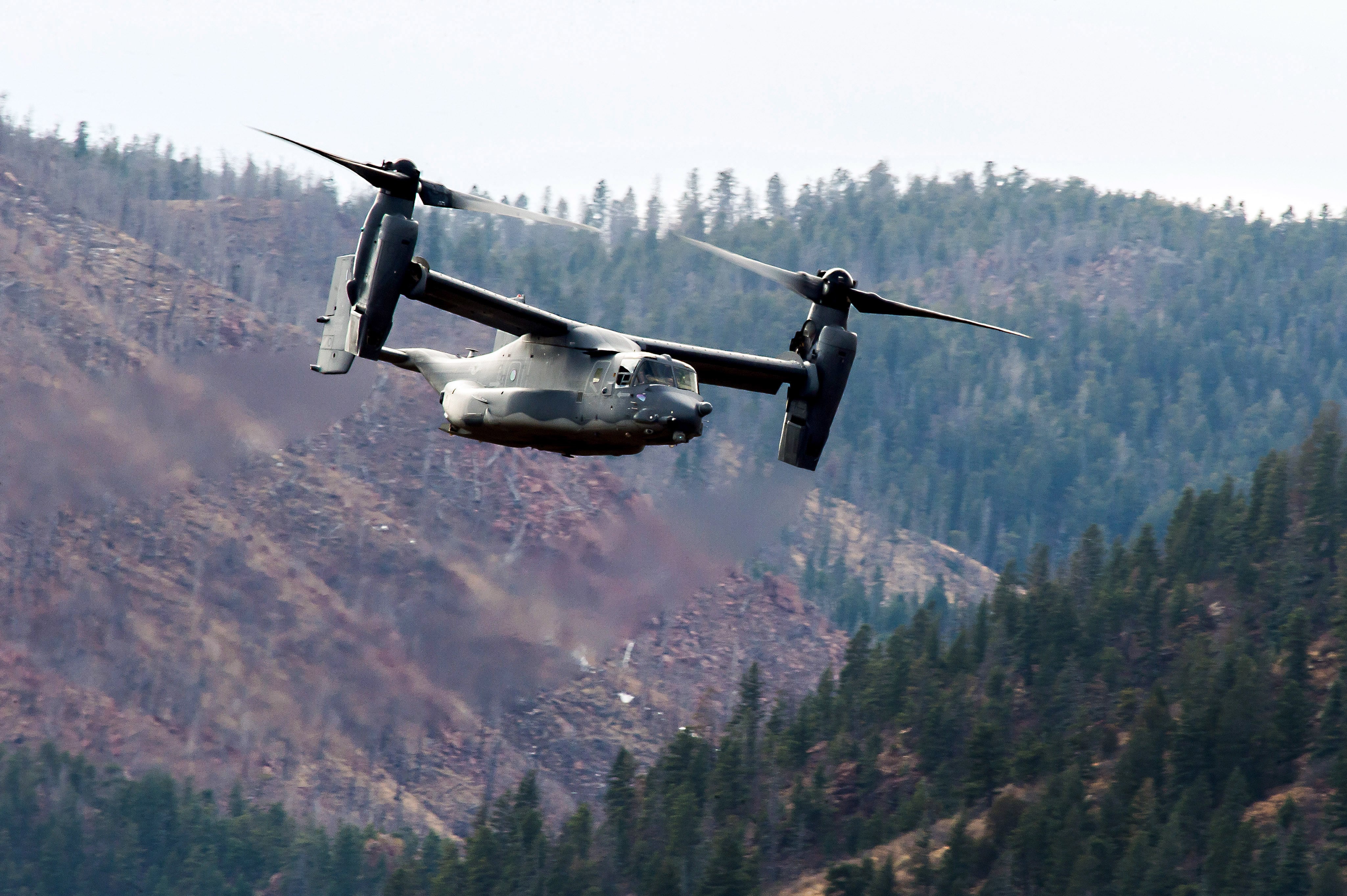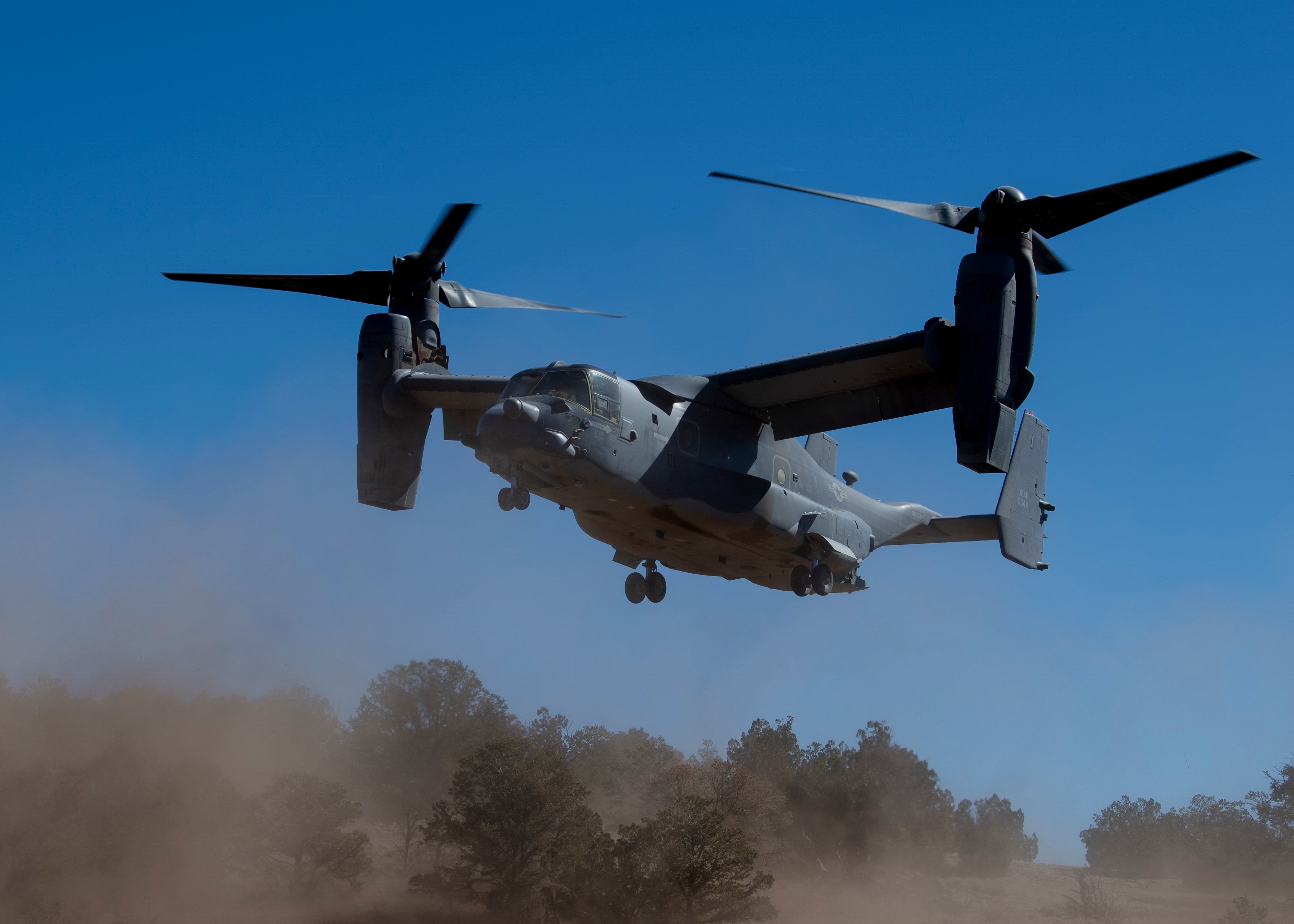Air Force Special Operations Command said Tuesday it has recovered the remains of six of the eight service members who were lost when their Osprey crashed off the coast of Japan last week, adding it is now focused on recovering the two bodies still missing and the aircraft debris.
The CV-22B Osprey crashed on Nov. 29 during a training mission. Ospreys have had a number of crashes, including in Japan, where they are used at U.S. and Japanese military bases, and the latest has rekindled safety concerns.
RELATED

Three bodies were newly recovered from the sunken wreckage Tuesday, raising the total number of remains the Air Force has recovered to six of the Osprey’s eight crew members, the Air Force said. The search continues for the remains of the two crew members who are still unaccounted for, it added.
“The depth of sorrow is immeasurable,” Lt. Gen. Tony Bauernfeind, who heads Air Force Special Operations Command, said in a statement announcing the names of the crew. “The honorable service of these eight airmen to this great nation will never be forgotten, as they are now among the giants who shape our history.”
President Joe Biden said he and first lady Jill Biden were heartbroken by the loss.
“We owe them everything,” Biden said in a statement. “Jill and I are praying for the families and friends who lost a loved one in this terrible accident.”
U.S. Air Force Maj. Jeffrey T. Hoernemann, 32, of Andover, Minnesota, was a CV-22 instructor pilot and officer in charge of training, assigned to the 21st Special Operations Squadron, 353rd Special Operations Wing, Yokota Air Base, Japan.
U.S. Air Force Maj. Eric V. Spendlove, 36, of St. George, Utah, was a residency trained flight surgeon and medical operations flight commander assigned to the 1st Special Operations Squadron, 353rd Special Operations Wing, Kadena Air Base, Japan.
U.S. Air Force Maj. Luke A. Unrath, 34, of Riverside, California, was a CV-22 pilot and flight commander assigned to the 21st Special Operations Squadron, 353rd Special Operations Wing, Yokota Air Base, Japan.
U.S. Air Force Capt. Terrell K. Brayman, 32, of Pittsford, New York, was a CV-22 pilot and flight commander assigned to the 21st Special Operations Squadron, 353rd Special Operations Wing, Yokota Air Base, Japan.
U.S. Air Force Tech. Sgt. Zachary E. Lavoy, 33, of Oviedo, Florida, was a medical operations flight chief assigned to the 1st Special Operations Squadron, 353rd Special Operations Wing, Kadena Air Base, Japan.
U.S. Air Force Staff Sgt. Jake M. Turnage, 25, of Kennesaw, Georgia, was a flight engineer assigned to the 21st Special Operations Squadron, 353rd Special Operations Wing, Yokota Air Base, Japan.
U.S. Air Force Senior Airman Brian K. Johnson, 32, of Reynoldsburg, Ohio, was a flight engineer assigned to the 21st Special Operations Squadron, 353rd Special Operations Wing, Yokota Air Base, Japan.
U.S. Air Force Staff Sgt. Jake M. Galliher, 24, was a native of Pittsfield, Mass. His remains were the first to be found.
“We will never forget the service and commitment of these airmen,” Air Force Chief of Staff Gen. David Allvin said in a statement Tuesday. “We will always honor their devotion to our country, and we will ensure the families of the fallen receive the respect, care and support they deserve.”
Prime Minister Fumio Kishida sent a message to Biden, offering his heartfelt condolences to the families of those who were lost and to the American people and his thanks for their dedication away from home for the peace and stability of Japan and the region.
The U.S.-made Osprey is a hybrid transport aircraft that takes off and lands like a helicopter but can rotate its propellers forward and cruise much faster, like an airplane, during flight.
The cause of the crash is under investigation.
Four fatal Osprey crashes, including the latest mishap, have claimed the lives of 20 American troops in the past two years. This is the first fatal incident involving an Air Force-owned CV-22 since 2010, and the service’s deadliest accident since 2018, when nine Puerto Rico Air National Guard troops died in a WC-130 weather reconnaissance plane crash.
The crash also marked the second lethal U.S. special operations mission in November, after five soldiers died Nov. 10 in a MH-60 Black Hawk helicopter crash in the eastern Mediterranean Sea.
Japan has suspended all flights of its own fleet of 14 Ospreys. Japanese officials say they have asked the U.S. military to resume Osprey flights only after ensuring their safety. The Pentagon said no such formal request has been made and that the U.S. military is continuing to fly 24 MV-22s, the Marine version of Ospreys, deployed on the southern Japanese island of Okinawa.
In Tokyo, Defense Ministry Press Secretary Akira Mogi said Tuesday that deployment of Ospreys is key to a defense buildup in southwestern Japan due to current regional security concerns but acknowledged the need to address the residents’ safety worries rekindled by the crash.
Mogi said Japanese defense officials are examining information shared by the U.S. to determine if the U.S. military responses are adequate, but he added that the shared information so far is insufficient. “We need further explanation, information and a process to verify that,” he said.
Parts of the wreckage have been collected by Japanese vessels and are being handed over to the U.S. military for examination.
Adm. Ryo Sakai, chief of staff of the Maritime Self-Defense Force, or Japan’s navy, pledged Japan’s continued support for the search and recovery.
AP journalist Zeke Miller and Air Force Times Editor Rachel S. Cohen contributed to this story.
Tara Copp is a Pentagon correspondent for the Associated Press. She was previously Pentagon bureau chief for Sightline Media Group.





